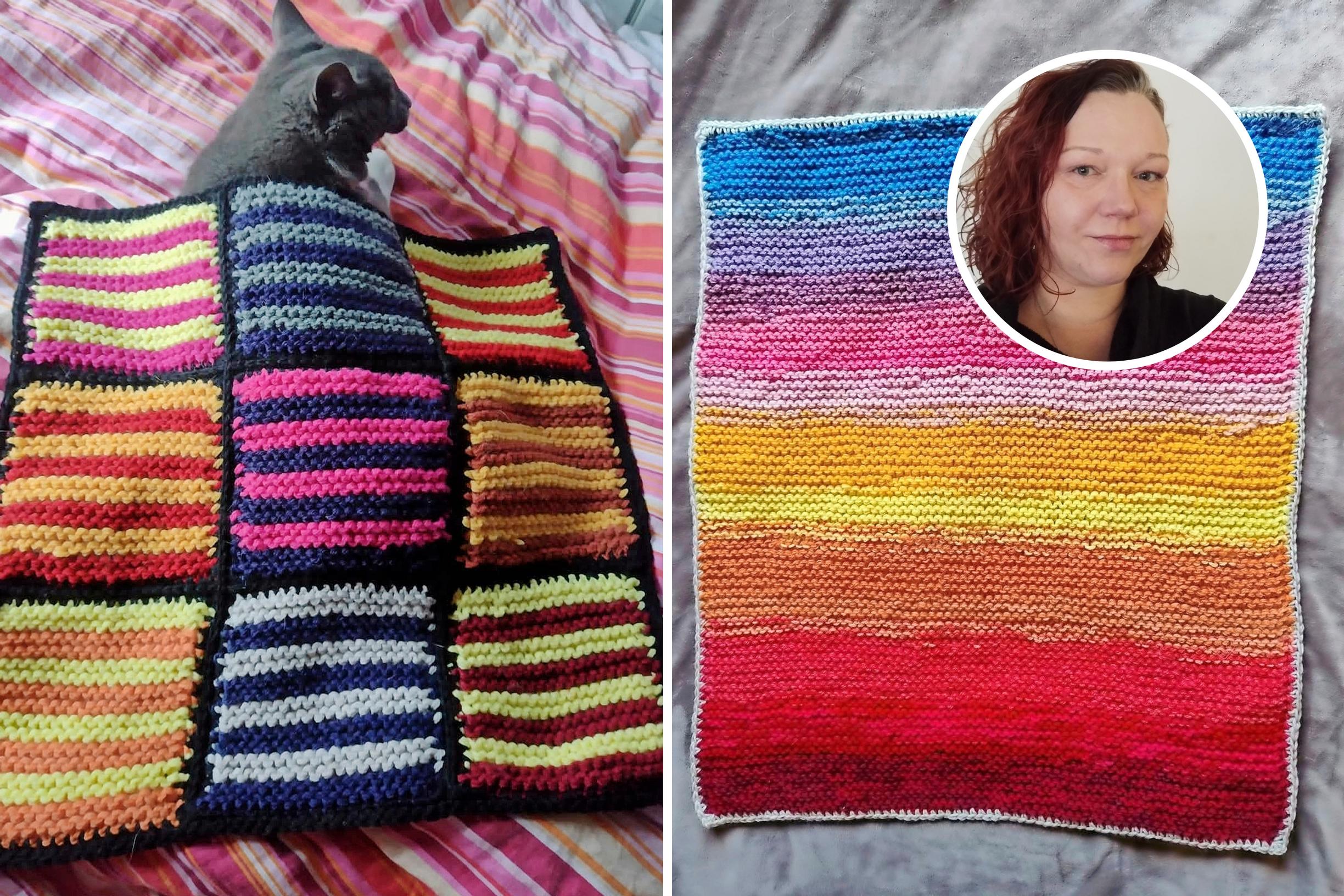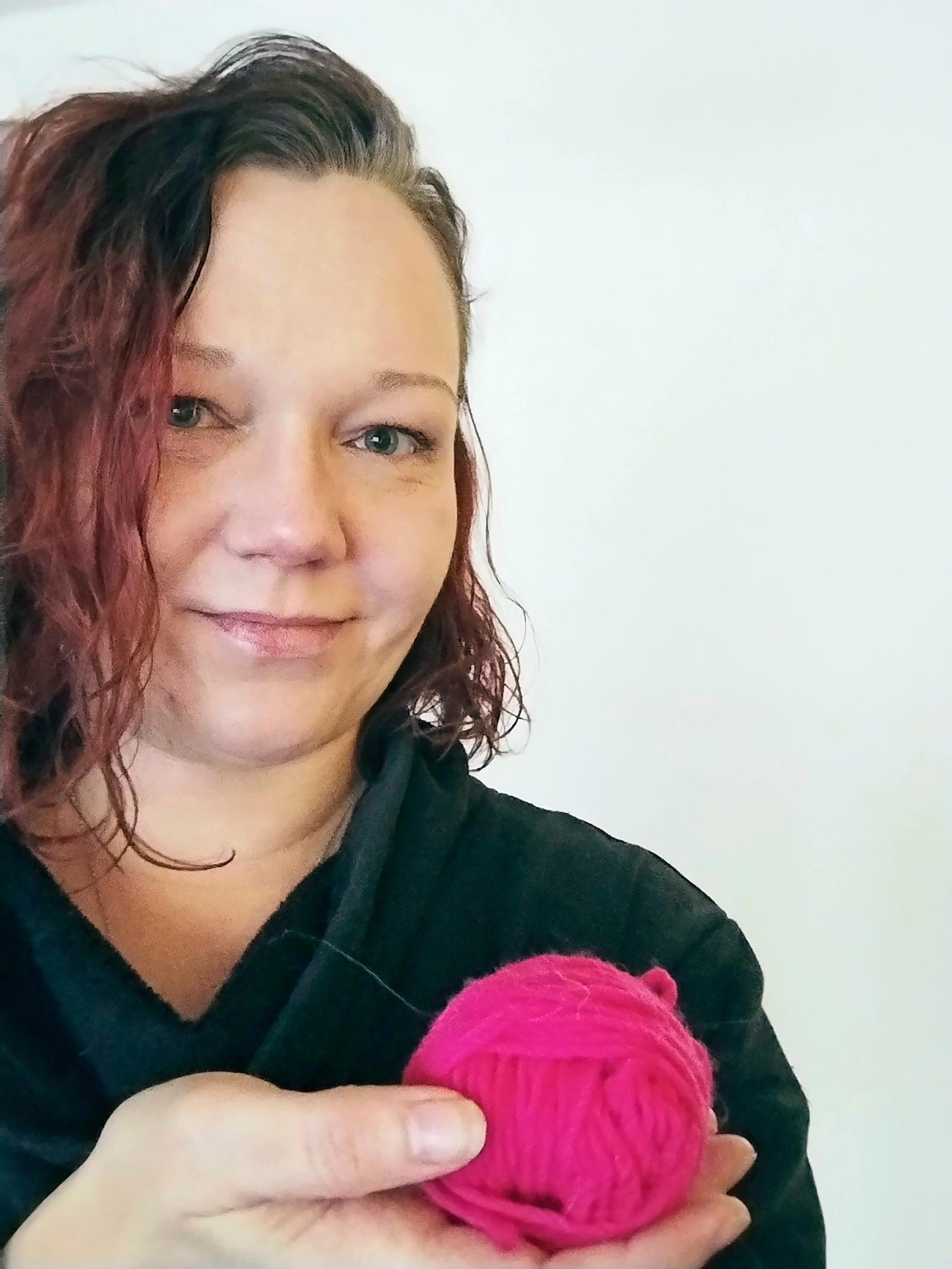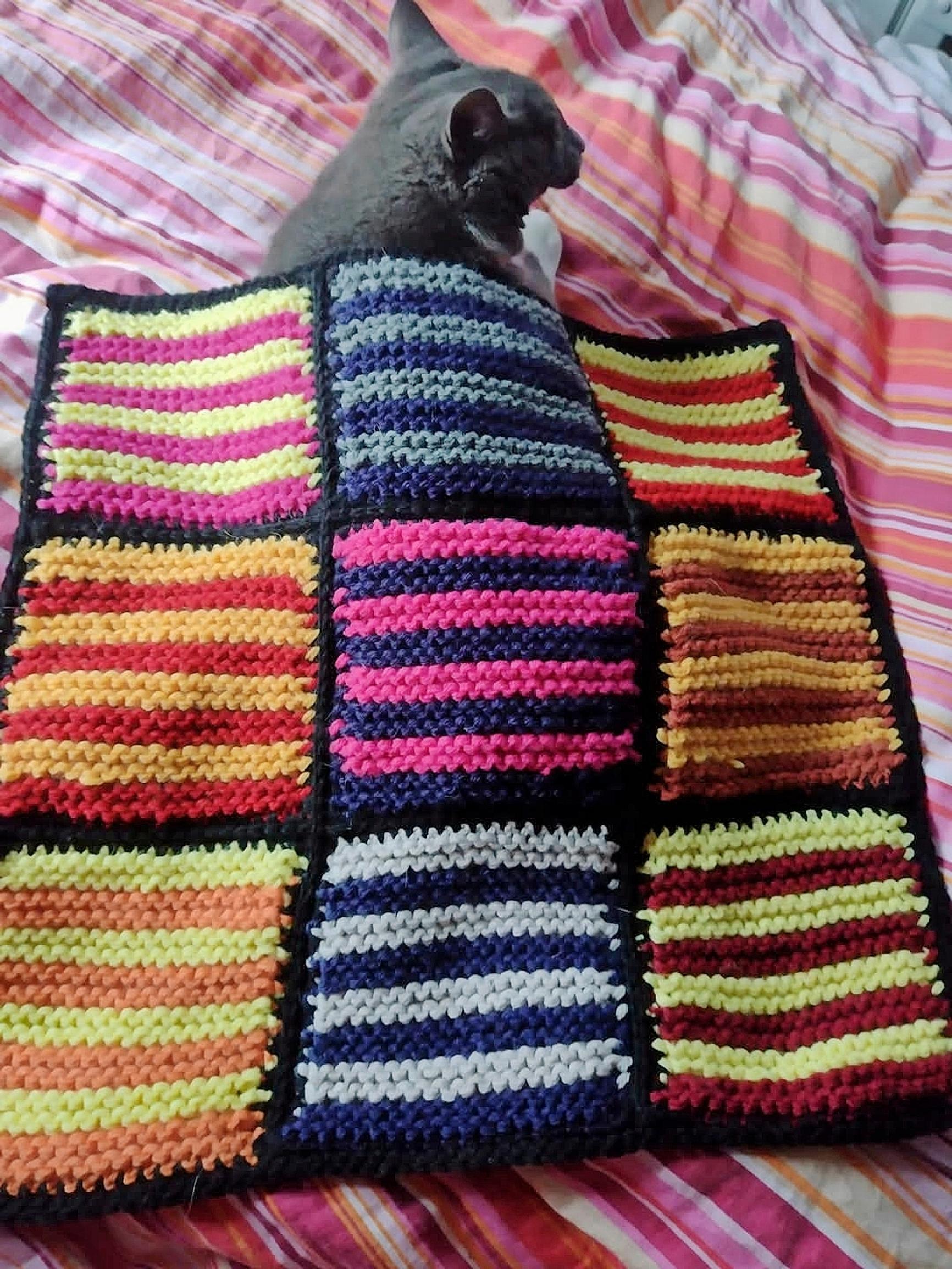
Over 100 knitted anesthesia blankets for animal patients! Heartwarming one-person project
When Tanja Paltta completes a new blanket, a cat—or a goose!—recovering from surgery can soon snuggle up under it. If you are interested in knitting for charity, Tanja advises confirming what the recipient needs in advance.
Tanja, how did the idea of knitting anesthesia blankets first come about?
A couple of years ago, I started knitting square patches in garter stitch. I had initially planned to knit wool socks, but I found it too difficult to focus on them because of my depression and anxiety.
When I had knitted a small pile of patches, I asked in a Facebook knitting group what I could do with them. I already knew I wanted to knit something for animals. When someone suggested combining the patches into anesthesia blankets, I jumped at the idea.
I have three cats that have been treated at the local vet clinic. When the clinic told me they had a need for these blankets, I got to work.

“The smallest patients are 40-gram house mice and the largest 1,500-kilogram breeding bulls. So I had quite a bit of freedom when it came sizes.”

What exactly are the blankets used for?
The blankets are used to keep animals warm when they are sedated or put under anesthesia for procedures. Typically, an animal’s body temperature drops due to sedation or anesthesia, which slows their recovery. The animals will stay warm when they’re covered, which supports the healing process.
When I asked the clinic about preferred sizes, they told me the smallest patients are 40-gram house mice, and the largest are breeding bulls weighing 1,500 kilograms. Because of that, I had a lot of freedom when it came to sizes. The smallest blanket of my previous batch was 35 × 35 centimeters. Right now, I’m working on one that will measure 80 × 100 centimeters.


“The recipient may have preferences regarding the material or pattern, and those should be respected. Otherwise, your handmade items may not benefit them at all.”

What should you keep in mind if you’re inspired to knit for charity?
If you knit something as a donation, you should always first confirm that there is a genuine need for your work. The recipient may also have preferences regarding the material or pattern, and those should be respected. Otherwise, your handmade items may not benefit them at all.
I myself use leftover yarn for the blankets, so their size and appearance depend on whichever yarn I happen to have. I prefer wool-blend yarns because they are durable and will be warm even if the animal happens to have a little accident.


